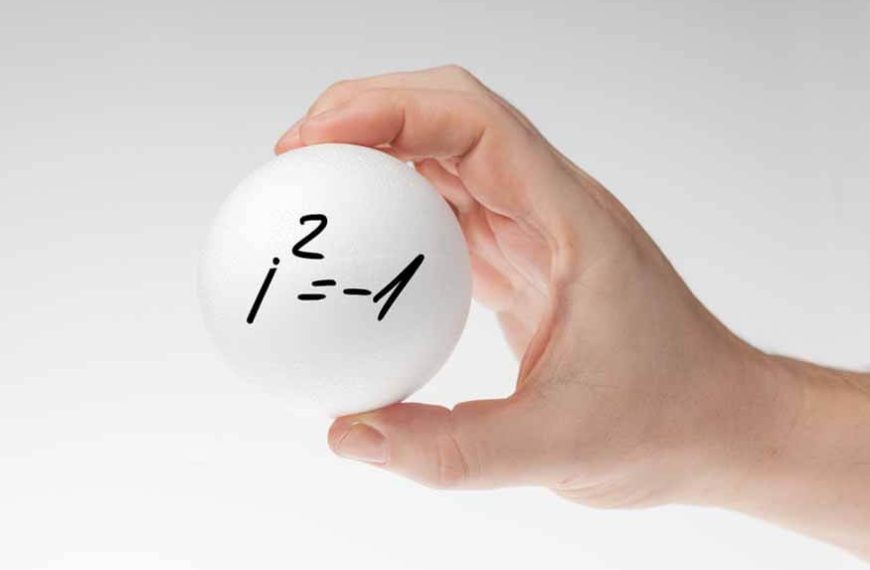Many children have Imaginary Friends who they play with, in the earliest years of their lives.
When they grow up, they naturally bid adieu to these magical folk, who have formed an integral part of their childhoods.
Unlike imaginary friends, Imaginary Numbers find their presence felt all our lives. In case you might be wondering, ‘What is an Imaginary Number?’, here’s some food for thought:
‘Imaginary Numbers are not Real Numbers. And no, this is not a Trick Statement!’
All numbers, both real and imaginary, are categorised under the category, ‘Complex Numbers.’ This article is an attempt to teach you all about imaginary numbers, including Imaginary numbers Examples, and even an Imaginary Numbers Chart.
Are you ready, then, to discover all about Imaginary Numbers and their Properties? Read on, to find out more!
Imaginary Numbers: Not a Figment of the Imagination
In case you might be wondering if there is actually a way to define imaginary numbers apart from stating they are ‘not real’, here it is.
‘Imaginary Numbers are those whose Square results in Negative Results.’
Conversely, this means that the square roots of negative numbers are imaginary numbers. The reason we even call them Imaginary Numbers, is because we simply cannot associate them with any numbers that are found in Real Life.
Imaginary Number Symbol
Imaginary numbers might be imaginary in essence, but they really do merit the usage of a symbol that can represent them.
The generally accepted Imaginary Number symbol is ‘i’.
Note: This symbol is also known as ‘iota.’
Imaginary Numbers Examples
Now that we have discovered the symbol that is used to represent imaginary numbers, namely ‘i’, it is important to note that it is by no means solitary.
In fact, we can take multiples of this imaginary number, and create several more imaginary numbers.
Example: 4i and -10i
In case you’re wondering how Imaginary Numbers relate to Real Numbers, the following example will help demonstrate just that.
(2i) squared = 22 i2
= (4i) squared
If we use the fact that i2 = -1, we can break this down even further.
= 4 (i2)
= 4 (-1)
= -4
It is interesting to note here that, the very fact that (2i) squared = -4, means that 2i is the square root of -4.
Complex Numbers: A closer look
By now, you have a brief sense of the differences between Real and Imaginary Numbers. What are Complex Numbers?
As we briefly mentioned earlier in this article, a Complex Number is nothing short of being a combination of both Real and Imaginary Numbers.
The standard format of a complex number would be: ‘a + bi’.
Where,
- a and b are representative of real numbers.
- i is an imaginary number.
Examples of Real Numbers: 2, 6, -10
Examples of Imaginary Numbers: 4i, 7i, -2i
Examples of Complex Numbers: 7 + 16i, 2 – 14.5i
Imaginary Numbers Chart
The Imaginary Numbers Chart is a chart that outlines the Exponents of imaginary numbers.
It is here that we learn about the most interesting property of ‘i’. Namely, that it cycles through 4 different values, when it is multiplied.
For example,
- i x i = -1
- -1 x i = -i
- -i x i = 1
- 1 x i = i
What you will observe here is, the cycle will continue through the exponents.
Imaginary Numbers and Algebraic Operations
Now that you have a brief understanding of What are Imaginary Numbers and even know some Imaginary Numbers Examples, here’s presenting a look at the different operations that entail the use of these mysterious numbers.
Adding and Subtracting Imaginary Numbers
Want to add or subtract imaginary numbers? It’s really not all that different, vis a vis the addition and subtraction of Real numbers.
Addition
When talking about Addition with Imaginary Numbers, consider the following example.
2i + 6i = 8i
Also, if z1 = x1+ iy1 and z2 = x2 + iy2
Then, z1+z2 = (x1+x2) + I(y1+y2)
Subtraction
Just like its Addition counterpart, Subtraction can be performed with Imaginary Numbers.
8i – 3i = 5i
Also, z1− z2 = (x1−x2) + I (y1−y2)
Multiplication
The following is an example of Multiplication involving the use of Imaginary Numbers.
ai × bi = (abi) squared = −ab, as I = (square root of -1) ⇒ i2 = −1
For example: 4i × 6i = 24 i2 = 24(−1) = −24, as i2 = −1
Division
Similar to the operation of Multiplication, seen above.
6i / 2i=3.
8i (to the power of 6) / 4i (to the power of 3) = 4i (to the power of 6−3) = 4i (cube)
= -4i
Also,
If z1=x1+ iy1 and z2 = x2 + iy2
Then, z1.z2 = (x1+iy1) (x2+iy2)
Some Interesting Facts about Imaginary Numbers
Think you know all about Imaginary Numbers?
Here are some facts about Imaginary Numbers that you will find most interesting.
- Imaginary numbers are not limited to the field of Mathematics. They are widely used in Engineering, too. A cool observation is, Electrical Engineers use the symbol ‘j’ to represent -1 instead of Mathematicians, who use ‘i’.
- In the beginning, Imaginary numbers were not thought to be relevant. That was only later, when their use to create complex numbers was discovered.
- They are important in finding the ‘real root’ of cubic equations. What is interesting here, is that it is their ‘imaginary’ roots, not ‘real’ ones, that assist in the discovery of elusive cubic roots.
- Imaginary Numbers are widely used in the study of Quantum Physics, too! They can be used for modelling the Periodic Motions of things like Light Waves and Water.
- Last but not the least, the most interesting fact of all! Imaginary numbers are just ‘as unreal’, as their ‘real’ counterparts. After all, ‘Maths’ is not a physical object in the observable Universe.
At EuroKids we believe that Imaginary Numbers are a lot more important than they are given credit for. After all, they help us find solutions for several equations that do not have any ‘Real Number’ solutions.
















